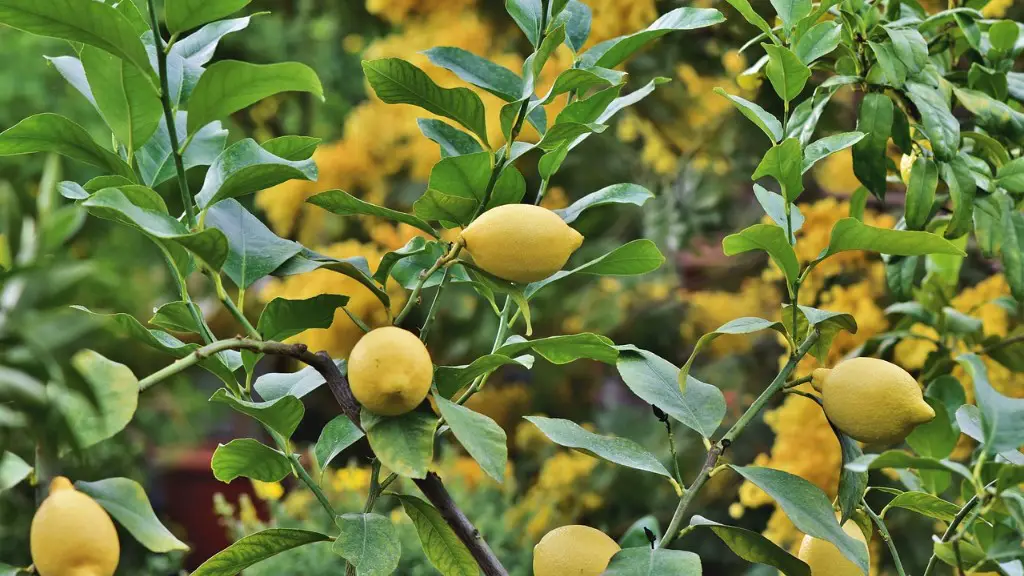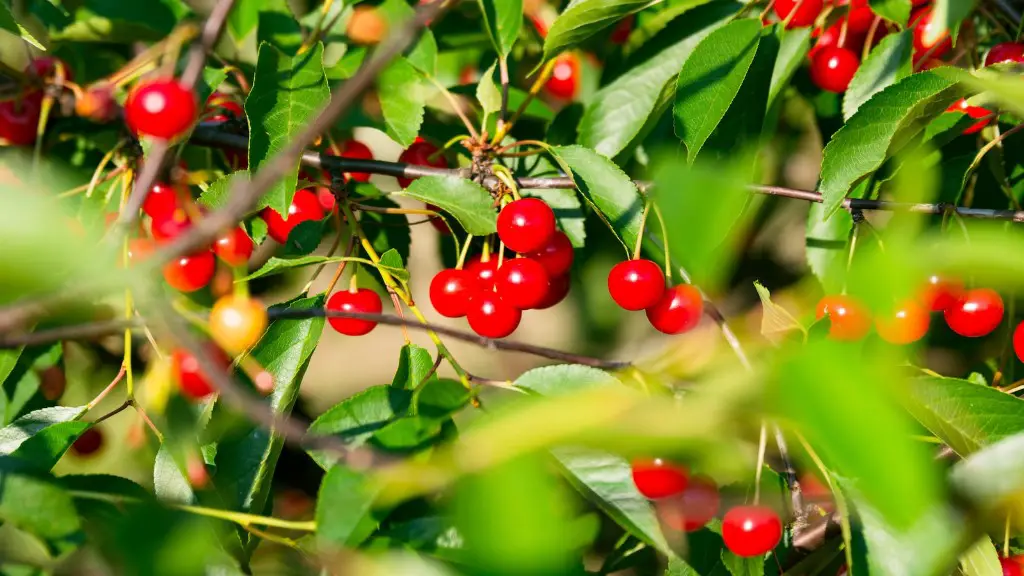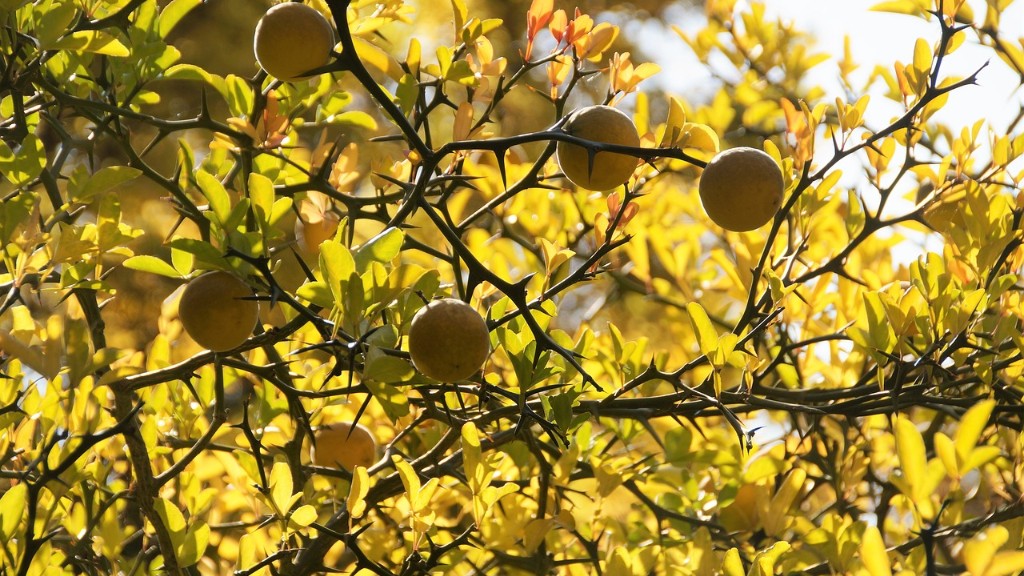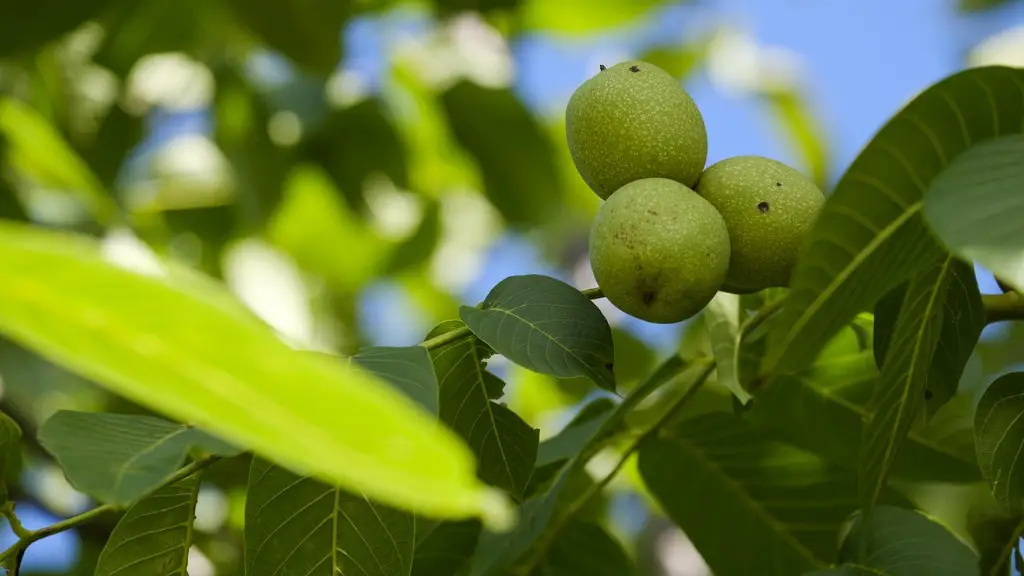The question of whether an apple tree will bear fruit is an understandable one. The answer to this question depends on several factors, including the type of tree, the environment it grows in, and the kind of care it receives. While some apple trees are more reliable fruit producers than others, there are a few general tips that can help increase the chances that your apple tree will bear fruit.
If you’re buying a young tree from a nursery, it’s important to select one that is groomed and taken care of correctly. An apple tree should be at least one year old in order to bear fruit, so make sure to get a standard-sized tree that isn’t too young or too old. Visit the nursery several times before selecting the tree in order to assess its health and determine whether it’s in an appropriate condition for fruit bearing.
When planting your apple tree, place it in a spot that receives full sunlight and has good drainage. The soil should also be loose and well-drained enough to allow the roots to spread out, as overcrowded and waterlogged roots can lead to poor fruit production. You should also mulch the soil around the tree, which can retain moisture and discourage weeds.
It’s important to provide your apple tree with proper pruning and care. Apple trees need to be trimmed regularly in order to encourage an optimal balance between vegetative shoots and fruit-bearing limbs. Pruning is also essential for controlling the size of an apple tree and allowing it to grow in a healthy and manageable shape. Additionally, regularly fertilize your apple tree in the spring and early summer to give it the necessary nutrients to flourish.
Many apple trees require a compatible partner in order to bear fruit, so make sure to check if your type of apple tree requires a pollinator. To ensure efficient pollination, select two trees of different type and prune them to ensure they’re evenly sized. This will also reduce the risk of poor limbs causing one tree to overshadow the other.
When it comes to harvesting the apples, keep in mind that the best time to pick apples is when they’re ripe. Apples should be picked when they’re full-sized and developed to the point where the color of the apple changed significantly compared to its immature ripening stage. It’s also a good idea to wait until the fall season before harvesting your apples, as winter blight can occur if harvested too early.
If your apple tree is in good condition and you’re taking proper care of it, you should be able to enjoy a bountiful harvest. Just remember to follow the necessary steps to give your tree the best chance of producing lots of juicy apples.
What type of apple tree should I select?
When it comes to selecting the type of apple tree for your yard or garden, there are a few important considerations to keep in mind. Different apple tree varieties can have vastly different needs, so it’s important to select one that is suited to your local climate, soil type, and level of sunlight. Different types of apple trees have different weights and sizes, so it’s important to select one that is well-suited for your home’s environment and will require minimal maintenance.
It’s also a good idea to select an apple tree variety that produces particularly large and tasty apples, as some types may not meet your preferences. Many apple tree varieties are more suitable for certain soil types and climates, so check the labels to make sure you select one that’s appropriate for your area.
Apples are also a diverse type of fruit, as there are many different colors, shapes, and textures. Many apple tree varieties will specialize in a single type of apple, while others will provide a variety of different kinds. For example, a Gravenstein apple tree will produce crisp and tangy apples, while a Karmijn de Sonnaville apple tree is known for providing juicy and sweet apples.
For specific details and advice on which type of apple tree you should select for your yard or garden, it’s best to consult with a local horticulturist or a gardening expert. They can provide advice on apple tree varieties that will suit your local climate and provide good fruit yields.
What is the best fertilizer for an apple tree?
Giving your apple tree the proper nutrients and fertilizers is essential for it to achieve robust growth and bear plenty of fruit. A good quality nitrogen fertilizer should be the foundation of your apple tree’s nutrition plan. Nitrogen is an essential element for the growth of all plants, as it helps to boost protein production and increases photosynthesis. Nitrogen fertilizer should be added to the soil around the tree’s base in the early spring before its leaves start to bud.
Apple trees also need continual macronutrients such as calcium and phosphorus, which can be added through a fertilizer such as superphosphate. Traces of micronutrients such as magnesium, zinc, and iron should also be supplied continually to an apple tree. Applying these micronutrients in liquid form is often the most efficient way to ensure that your tree receives the necessary nutrients.
It’s best to minimize the risk of over-fertilization, as too much fertilizer can burn an apple tree’s roots or lead to fruit deformity. Therefore, it’s important to read the instructions on the fertilizer label and be judicious about the amount of fertilizer you are applying.
Organic fertilizers such as compost, manure, or bone meal are also excellent sources of nutrition for an apple tree. Many organic fertilizers contain a mix of nutrients that helps to encourage healthy growth and prolific fruit production. Organic fertilizers are also excellent sources of trace elements and beneficial fungi that help to enrich the soil.
No matter which type of fertilizer you use, always take into consideration your apple tree’s age, size, and health when deciding how much fertilizer to apply. If you’re unsure how to create an effective fertilizing regimen, contact your local horticulturist or agriculture specialist for advice.
Do I need to prune my apple tree?
Pruning your apple tree is an essential part of the fruit-bearing process, as it helps to promote healthy growth, encourage larger and higher-quality apples, and reduce the risk of disease. The best time for pruning an apple tree is in late winter or early spring, when the dormant tree has dropped most of its leaves. Pruning should be done carefully and gently, and ideally with a hand pruner or lopper.
The pruning process begins by removing dead or diseased branches that have been damaged by bad weather, disease, insects, or poor pruning practices. This step is important to ensure that the tree isn’t harboring negative conditions. After cutting away the dead, diseased, and weak branches, you can trim away other, healthy branches that are overlapping or competing for nutrients.
Proper pruning of an apple tree also helps to control the tree’s shape and size, as well as its canopy. Pruning the branches that are too low to the ground can help to prevent them from interfering with folks walking or mowing around the tree. Additionally, cutting away lateral, overhanging branches can also help to ensure that they don’t become excessively heavy and put too much strain on the tree.
When pruning an apple tree, it’s also important to create space between the branches so that air and sunlight can pass through easily. This will help to limit the risk of fungal diseases taking hold and ensure the apples receive adequate amounts of direct sunlight. Lastly, avoid pruning the apple tree’s fruiting buds until the winter season, when the tree has shed its leaves and is ready to let go of its fruits.
Do apple trees need a pollinator?
Some types of apple trees need a compatible pollinator in order to bear fruit. If yours does, make sure to locate a suitable pollinator for your apple tree when planting it. Pollination is the process by which some plants transfer pollen from one flower to another, which then allows the flower to produce an apple or other type of fruit. The Pollen from one tree is then transferred to the flowers of the other, allowing the apple trees to produce fruit.
Many apple trees require the assistance of a different type of apple tree in order to stimulate pollination. Keep in mind that the trees need to be planted in close proximity; the pollen must be able to reach the flowers without difficulty. Another factor to consider is the size of the trees; if one is too small or too large, it may not be able to efficiently transfer its pollen. In such cases, it’s important to choose two trees of similar size and opt for interspecific pollination (cross-pollination) instead.
Not all apple trees need a compatible pollinator in order to bear fruit, so it’s important to research the specific needs of your particular type of apple tree. Some apple trees are referred to as “self-fertile”, as they can produce fruit without the assistance of a compatible pollinator. Other types of apple trees are considered “partially self-fertile”, and their fruit production will benefit significantly from the presence of a compatible pollinator.
For specific advice on whether or not your particular type of apple tree needs a pollinator, contact a local horticulturist or agriculture specialist. They can provide practical advice on which type of compatible pollinator you should use and the best techniques for locating a suitable pollinator.




